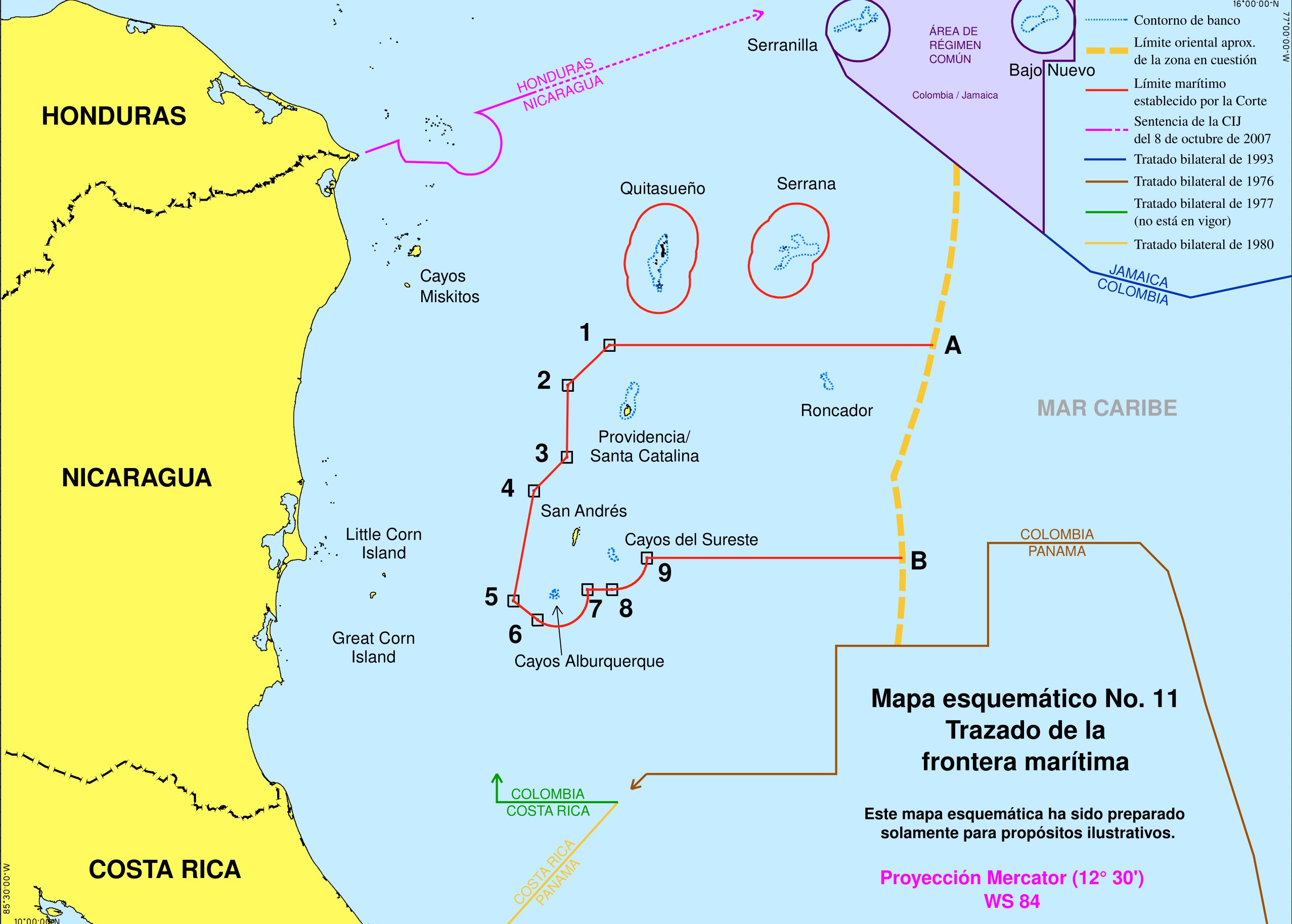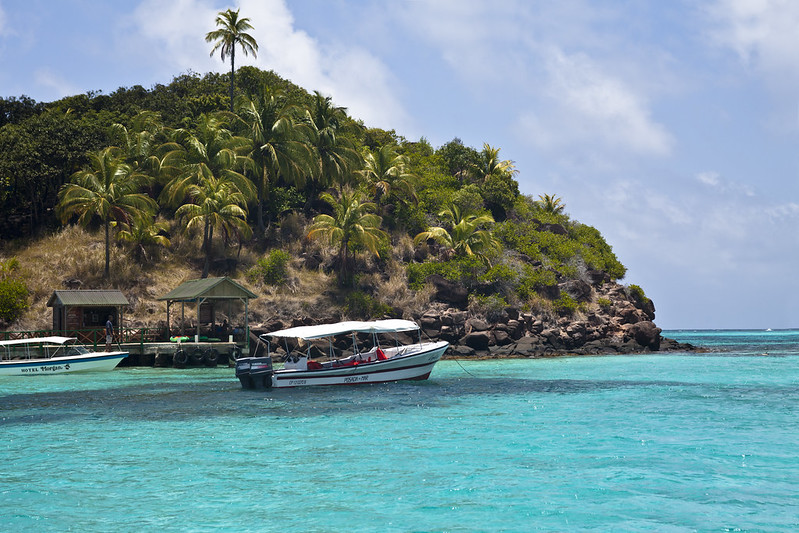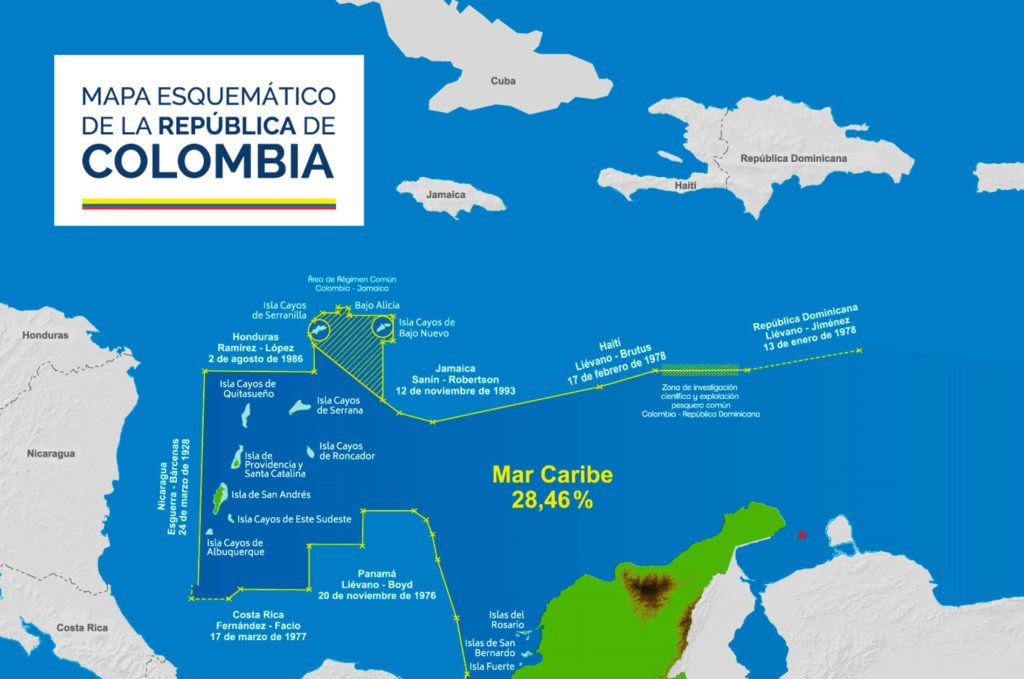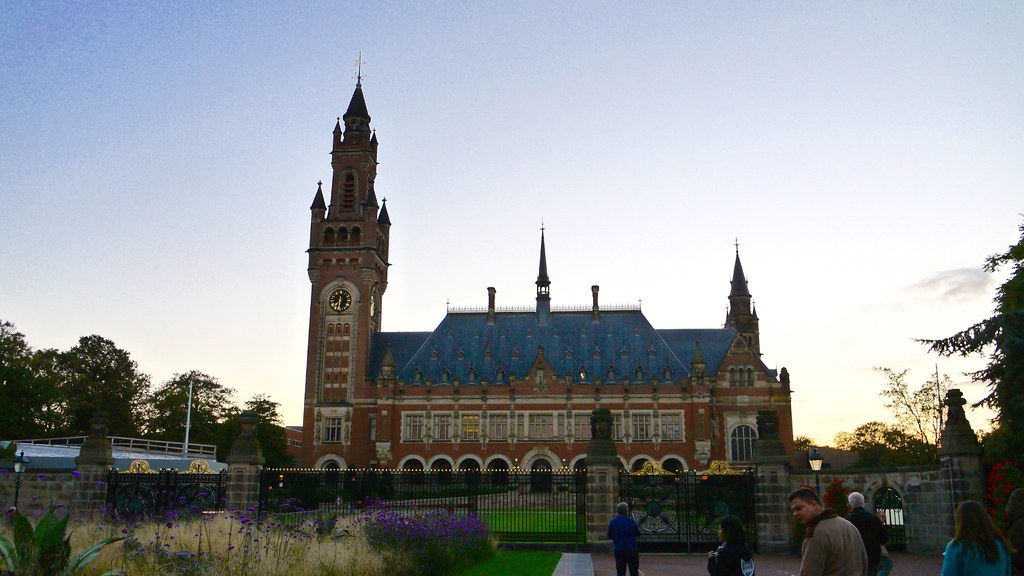
Colombia and Nicaragua maintain one of the most enduring territorial disputes in Latin America. But what is it about? This long-standing conflict revolves around the sovereignty of San Andrés, Providencia, and Santa Catalina, a paradisiacal archipelago popular with tourists visiting the Caribbean. Geographically much closer to Nicaragua (just over 200km away compared to nearly 800km from continental Colombia), these islands have been at the center of legal battles since the early 21st century.
Although the islands were governed by Colombia for over two centuries, Nicaragua has been attempting since 2001 to reclaim them, particularly through international bodies like the International Court of Justice (ICJ), the judicial organ of the UN dedicated to resolving inter-state conflicts. Beyond symbolism and their key location in the Caribbean, the archipelago’s waters and its seabed are rich in fishing resources and oil, making it a strategic issue for both countries.
The latest episode in this long saga occurred in July 2023, when the ICJ supported Colombia’s claims over the continental shelf delimitation of the archipelago. Hailed as a “great victory for Colombia” by President Gustavo Petro, the country has, failed to comply with previous ICJ decisions favoring Nicaragua.
San Andres archipelago
Before the arrival of Europeans in the Americas, the Archipelago of San Andres, Providencia, and Santa Catalina was inhabited by the Miskito people. These indigenous people traditionally inhabited the Caribbean coast of Honduras and Nicaragua, giving their name to this region, the Mosquito Coast. The first European power to reach the islands was Spain, most likely during Christopher Columbus’ fourth and last trip to the Americas, during which he sailed along the coasts of Central America, from Panama to Honduras. Although Spain officially claimed the archipelago in 1510, it was not until 1630 that there was a permanent European settlement on the island.
Little developed by the Spaniards, the islands became, from the second half of the 17th century, a haven for pirates and privateers scouring the Caribbean, such as the famous Welsh privateer Henry Morgan. This situation persisted throughout the golden age of piracy, until the end of the 18th century, with an agreement between the Spanish Empire and Great Britain that put an end to British piracy activities in the region.

The roots of Colombia-Nicaragua dispute
During the imperial and colonial era, the archipelago was under three different jurisdictions. Initially, it was briefly placed under the Royal Audience of Panama (Real Audiencia de Panama) before being transferred in 1544, and until 1803, to the authority of the Captaincy General of Guatemala (Capitanía General de Guatemala), an entity that included the majority of the present-day Central American states, including Nicaragua.
On the initiative of the archipelago’s governor, Tomas O’Neill, San Andres, Providencia, and Santa Catalina came under the jurisdiction of the Viceroyalty of New Granada (Virreinato de la Nueva Granada), the entity from which Colombia directly emerged. Loyal to the Spanish crown during the initial phases of the independence wars led by Simon Bolivar, the archipelago eventually aligned with the independence movement and joined the province of Cartagena, thus becoming part of the young Republic of Colombia.

The Federal Republic of Central America, the direct successor of the Captaincy General of Guatemala, did not recognize this annexation, deeming it illegal. After the dissolution of the federation in 1839, the nascent State of Nicaragua inherited the historical claims over the archipelago. The dispute lasted until 1928, with the signing of the Esguerra-Barcenas Treaty. Through the agreement, Colombia recognized Nicaragua’s sovereignty over the Mosquito Coast and the latter acknowledged Colombian sovereignty over the Archipelago of San Andres, Providencia, and Santa Catalina.
Although the dispute seemed definitively buried, the rise to power of Daniel Ortega and the Sandinista movement in Nicaragua opened a new chapter in relations with Colombia. After the constitutional revision of 1987, Nicaragua denounced the Esguerra-Barcenas Treaty and claimed sovereignty over the archipelago. Among the main arguments advanced by Nicaragua was the fact that the country was under American military occupation (1912-1933) at the time of the treaty’s signing, and thus deprived of its sovereignty, making the document null.
Nicaragua brings the dispute before the ICJ
Nicaragua ultimately presented its case to the International Court of Justice in December 2001, filing an application instituting proceedings against Colombia concerning territorial sovereignty and maritime delimitation. In its request, Nicaragua sought recognition of its sovereignty over San Andres, Providencia, and Santa Catalina, along with a series of smaller islets within the archipelago, and the Roncador, Serrana, Serranilla, and Quitasueño cays. Additionally, it demanded a redefinition of its Exclusive Economic Zone (EEZ) and maritime boundary with Colombia.
In its preliminary objections issued in December 2007, the Court stated that the Esguerra-Barcenas Treaty effectively settled the issue of Colombian sovereignty over the archipelago. However, it noted the treaty’s failure to determine the status of several uninhabited islets and the delimitation of the maritime border between Colombia and Nicaragua.

In its final judgment, issued in November 2012, the ICJ recognized Colombia’s sovereignty over the archipelago, including the islets and the four cays, citing Colombia’s historical authority over these territories. Conversely, the ICJ upheld Nicaragua’s claim regarding the maritime borders, resulting in a substantial extension of its EEZ, nearly doubling it.
Colombia’s position
Due to the Court decision’s implications for Colombia’s maritime space, the judgment was firmly rejected by then-President Juan Manuel Santos. Backed by the Colombian Congress, President Santos denied the ICJ authority over the determination of Colombia’s borders and eventually enforced Colombian maritime borders through a Presidential Decree in September 2013.
Colombia’s rejection of the Court decision led to a new application from Nicaragua, instituting proceedings over alleged violations of its sovereign rights and maritime spaces, one week after the previous ICJ judgment in November 2012. In its final decision on the case, issued in April 2022, the ICJ supported Nicaragua’s claims and recognized violations of Nicaraguan sovereignty by Colombia.

The state of the dispute
Colombia continues to assert its current maritime borders through a significant presence of the Colombian navy, repelling Nicaraguan scientific missions and fishing vessels. Thus, Colombia remains in a vigorous territorial dispute with Nicaragua. Indeed, in the eyes of the United Nations Tribunal, Colombia is illegally occupying part of Nicaragua’s maritime territory. Simultaneously, Colombia refers to the Esguerra-Barcenas Treaty to define its EEZ, complicating further the issue as there are now two differing narratives of legitimacy.
Beyond maritime territory, Nicaragua has also sought to expand its continental shelf delimitation. Unlike the EEZ, the continental shelf determines the limits of the seabed and subsoil of the submarine areas of each nation. In September 2013, Nicaragua initiated another proceeding against Colombia, seeking to extend its regulatory 200 nautical miles at the expense of Colombia. A decade later, in July 2023, the ICJ finally ruled on the case and denied Nicaragua’s claims over the Colombian continental shelf. Although the court’s decision was accepted by both nations, the fate of the Nicaraguan EEZ remains unresolved and stands as an obstacle in Colombia-Nicaragua relations.
See all the latest news from Colombia and the world at ColombiaOne.com. Contact our newsroom to report an update or send your story, photos and videos. Follow Colombia One on Google News, Facebook, Instagram, and subscribe here to our newsletter.

